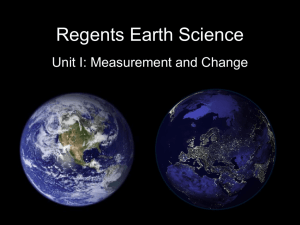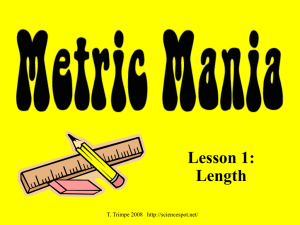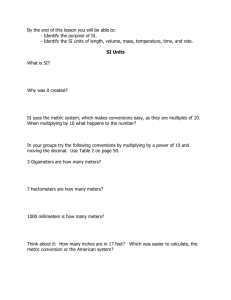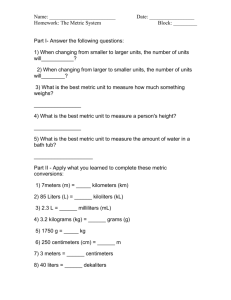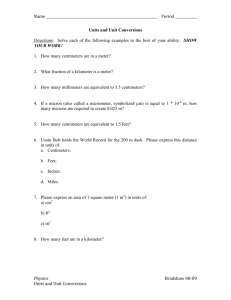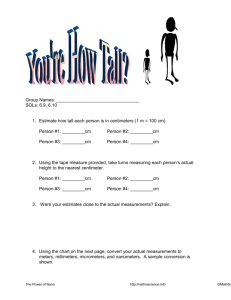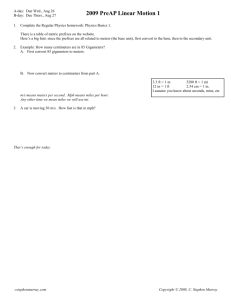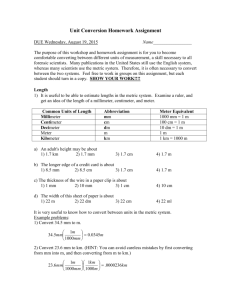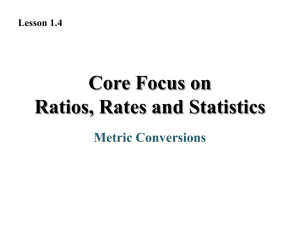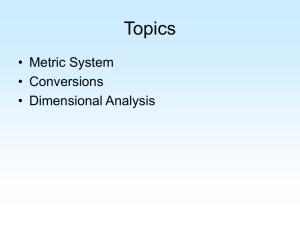Science Math
advertisement
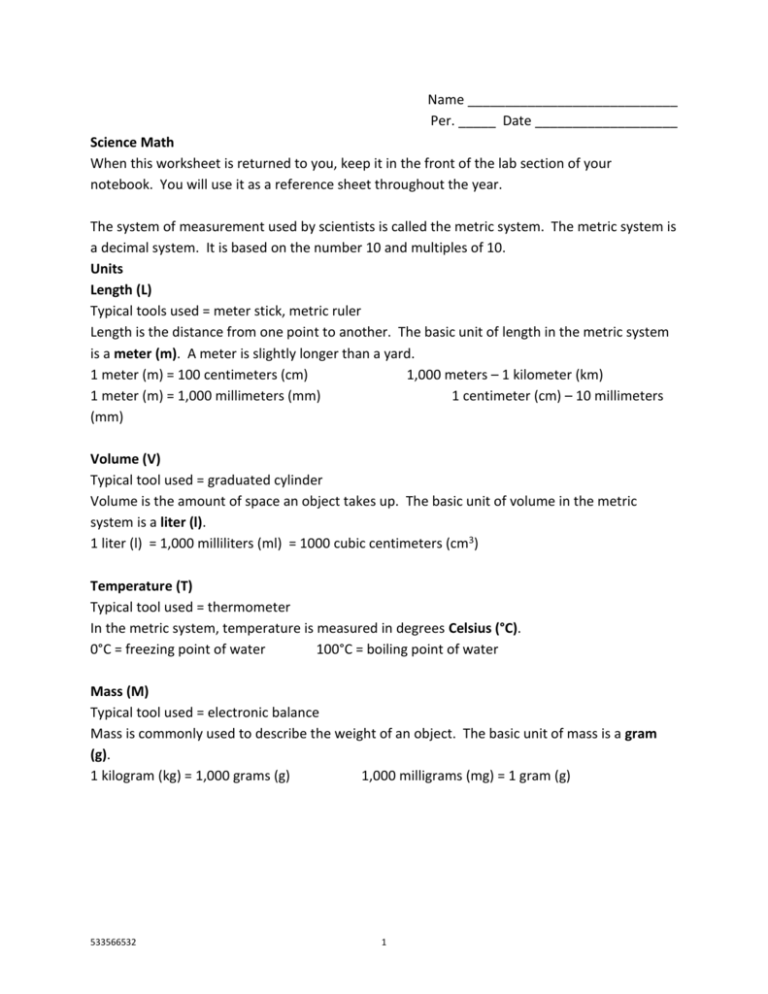
Name ____________________________ Per. _____ Date ___________________ Science Math When this worksheet is returned to you, keep it in the front of the lab section of your notebook. You will use it as a reference sheet throughout the year. The system of measurement used by scientists is called the metric system. The metric system is a decimal system. It is based on the number 10 and multiples of 10. Units Length (L) Typical tools used = meter stick, metric ruler Length is the distance from one point to another. The basic unit of length in the metric system is a meter (m). A meter is slightly longer than a yard. 1 meter (m) = 100 centimeters (cm) 1,000 meters – 1 kilometer (km) 1 meter (m) = 1,000 millimeters (mm) 1 centimeter (cm) – 10 millimeters (mm) Volume (V) Typical tool used = graduated cylinder Volume is the amount of space an object takes up. The basic unit of volume in the metric system is a liter (l). 1 liter (l) = 1,000 milliliters (ml) = 1000 cubic centimeters (cm3) Temperature (T) Typical tool used = thermometer In the metric system, temperature is measured in degrees Celsius (°C). 0°C = freezing point of water 100°C = boiling point of water Mass (M) Typical tool used = electronic balance Mass is commonly used to describe the weight of an object. The basic unit of mass is a gram (g). 1 kilogram (kg) = 1,000 grams (g) 1,000 milligrams (mg) = 1 gram (g) 533566532 1 Conversions Conversion between units is a skill needed when you work with the metric system. The following example should be your primary way of converting units. Example: convert 152 meters into centimeters Solution: Equivalent from tables(see note below) The value you are converting Answer – cancel units, leaving centimeters – your target unit Note: The equivalent should have the unit you are converting from as the denominator and your target unit as the numerator. Practice Complete the following problems in the space provided. Show all your work. Showing all your work includes setting up the entire equation and using unit abbreviations for each value. Draw a box around your final answer – include units! 1. 3 meters into centimeters 2. 10 kilometers into meters 3. 38 millimeters into centimeters 4. 435 millimeters into centimeters 5. 15,050 millimeters into meters 533566532 2 6. 3,264 centimeters into meters Many times you will need to convert between English System measurements to the metric system or vice versa. Use the conversion factors to complete the problems that follow. Length Volume Mass 2.54 cm = 1 inch (in) 1 liter = 1.06 quarts 1 kilogram (kg) = 2.20 pounds (lb) 1 m = 3.28 feet (ft) 3.79 liters = 1 gallon 1 m = 1.094 yards (yd) 1.609 km = 1 mile (mi) Practice 1. 4.5 inches into centimeters 2. 25.3 meters into feet 3. 2.3 miles into kilometers 4. 14 inches into centimeters 5. 125 pounds into kilograms 6. 20 gallons into liters 533566532 3 Science Problems Most science problems aren’t presented as simple “hey convert this!” problems. They are often word problems. For example, do the following problem. Show your work. Darth Vader is 2 meters tall. How tall is Darth in feet? Ok, that isn’t a problem from our Earth Science book or labs, but the next ones are. Complete these problems. Show your work. 1. Mrs. C just said that the Earth is 40,000 km in diameter. How many miles is that? 2. On a geologic time scale, 1 mm = 1,000,000 years. You need to mark 560 million years on the scale. How many cm do you measure for the mark? (You will use 2 conversion equivalents to determine the answer.) 3. Measured on a topographic map, Diamond Brook is 3.1 cm long (run). The change (rise) in elevation is 700 ft. Determine the average slope in feet per mile if the scale on the map is 1.5 cm per mile. Use rise over run to determine the slope. Show your work. Hint: first convert the run into miles and then divide the rise by the run. 533566532 4
